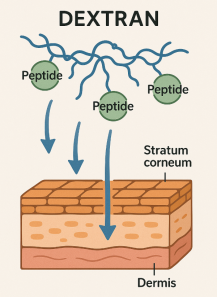Peptaxyl™ (Peptide Delivery Dextran)
Cosmetics
Code: 127545
a low–molecular‐weight dextran (average MW ~6 000 Da) produced by bacterial fermentation and purified for cosmetic use
Cart
No products
Subtotal:
0.00
Total
0.00
THB



